Thomas Stafford is a former Air Force pilot and former Gemini and Apollo astronaut perhaps most well-known for being Commander of Apollo 10, the dress rehearsal for the Moon landing. 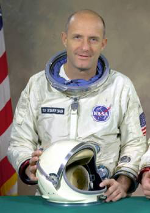
He was born in Weatherford, Okla., on Oct. 17, 1930, and graduated from Weatherford High School in 1948. He entered the U.S. Naval Academy and graduated from there with honors in 1952. 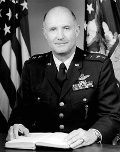
The following year, Stafford received his pilot's wings and, following advanced interceptor training, found himself assigned to Ellsworth Air Force Base, in San Diego. His next assignment was at West Germany's Hahn Air Base, as a flight leader, pilot, and flight test maintenance officer. Back in the U.S., Stafford was at California's Edwards Air Force Base in 1958, enrolling in the Air Force Experimental Flight Test Pilot School. After graduating a year later, he remained at the school as an instructor, writing a couple of books on flight testing while he was there. 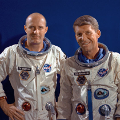
Stafford (left, left) was one of the second group of astronauts selected by the National Aeronautics and Space Administration, in 1962. He was the pilot of Gemini 6a, part of the first American spacecraft rendezvous, and of Gemini 9a. In May 1969, Stafford was Commander of Apollo 10, blasting off for an eight-day mission along with Command Module Pilot John Young, and Lunar Module Pilot Eugene Cernan that was a Moon landing in all but the final bit. 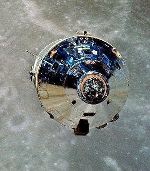
In the most critical test yet, Cernan and Stafford climbed into the Lunar Module and descended to less than 47,000 feet above the Moon. They made two passes over what would become the Sea of Tranquillity landing site for Apollo 11, tested all manner of systems–attitude control, communications, propulsion, and radar–and then successfully rejoined Young in the Command Module. As had been the case with previous missions, the technical glitches that they worked through (including a potentially deadly roll during the lunar module descent) gave NASA valuable information with which to plan for future challenges. The success of the mission gave NASA confidence that the next one could be as successful as it was planned to be. The following month, Stafford became head of the astronaut group and selected flight crews for the remaining Apollo projects and for the space station prototype Skylab. Two years later, he was named deputy In all of his travels, Stafford has logged more than 6,800 hours in the air. Among his many honors are the Presidential Medal of Freedom, the NASA Distinguished Service Medal, and the Veterans of Foreign Wars National Space Award. He has married twice and has four children. 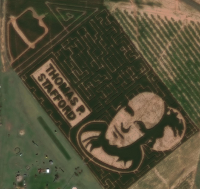 A museum in his hometown is named for him: the Stafford Air & Space Museum, which houses Stafford's Gemini 6a spacecraft, a Moon rock and artifacts from the space shuttle program, the Hubble Space Telescope, and the Mir Spact Station. In 2018, a local artist carved a 500-foot-wide likeness of Stafford into a local cornfield near the museum.
|
|
Social Studies for Kids
copyright 2002–2025
David White



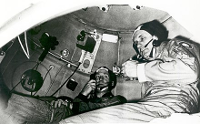 director of flight crew operations at the Manned Spacecraft Center. He went into space in July 1975, as Commander of the Apollo part of the Apollo-Soyuz Test Project. Later that year, he returned to Edwards Air Force Base as base commander. After a few years there, he joined Air Force Headquarters in Washington, D.C., as deputy chief of staff, research, development, and acquisition.
director of flight crew operations at the Manned Spacecraft Center. He went into space in July 1975, as Commander of the Apollo part of the Apollo-Soyuz Test Project. Later that year, he returned to Edwards Air Force Base as base commander. After a few years there, he joined Air Force Headquarters in Washington, D.C., as deputy chief of staff, research, development, and acquisition.
